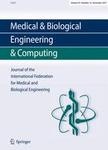版权所有:内蒙古大学图书馆 技术提供:维普资讯• 智图
内蒙古自治区呼和浩特市赛罕区大学西街235号 邮编: 010021

作者机构:Northeastern Univ Fac Robot Sci & Engn Shenyang 110167 Liaoning Peoples R China Northeastern Univ Key Lab Intelligent Comp Med Image Minist Educ Shenyang 110167 Peoples R China
出 版 物:《MEDICAL & BIOLOGICAL ENGINEERING & COMPUTING》 (医学和生物工程与计算)
年 卷 期:2024年第62卷第7期
页 面:1991-2004页
核心收录:
学科分类:0831[工学-生物医学工程(可授工学、理学、医学学位)] 0710[理学-生物学] 1001[医学-基础医学(可授医学、理学学位)] 0812[工学-计算机科学与技术(可授工学、理学学位)] 10[医学]
基 金:National Natural Science Foundation of China
主 题:Pulmonary nodule detection 3D medical image processing Convolutional neural network Transformer module Feature alignment
摘 要:Detection of suspicious pulmonary nodules from lung CT scans is a crucial task in computer-aided diagnosis (CAD) systems. In recent years, various deep learning-based approaches have been proposed and demonstrated significant potential for addressing this task. However, existing deep convolutional neural networks exhibit limited long-range dependency capabilities and neglect crucial contextual information, resulting in reduced performance on detecting small-size nodules in CT scans. In this work, we propose a novel end-to-end framework called LGDNet for the detection of suspicious pulmonary nodules in lung CT scans by fusing local features and global representations. To overcome the limited long-range dependency capabilities inherent in convolutional operations, a dual-branch module is designed to integrate the convolutional neural network (CNN) branch that extracts local features with the transformer branch that captures global representations. To further address the issue of misalignment between local features and global representations, an attention gate module is proposed in the up-sampling stage to selectively combine misaligned semantic data from both branches, resulting in more accurate detection of small-size nodules. Our experiments on the large-scale LIDC dataset demonstrate that the proposed LGDNet with the dual-branch module and attention gate module could significantly improve the nodule detection sensitivity by achieving a final competition performance metric (CPM) score of 89.49%, outperforming the state-of-the-art nodule detection methods, indicating its potential for clinical applications in the early diagnosis of lung diseases.